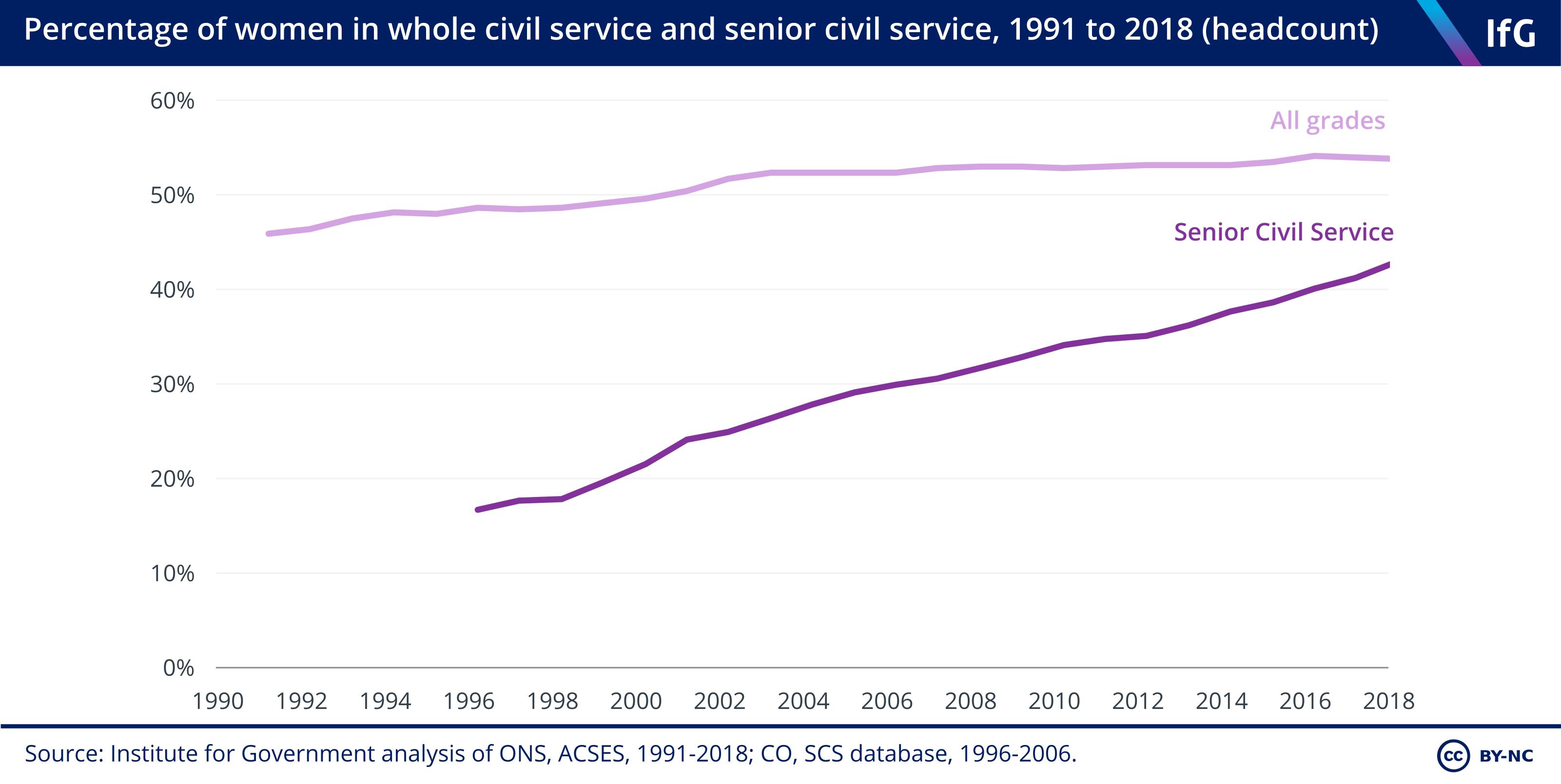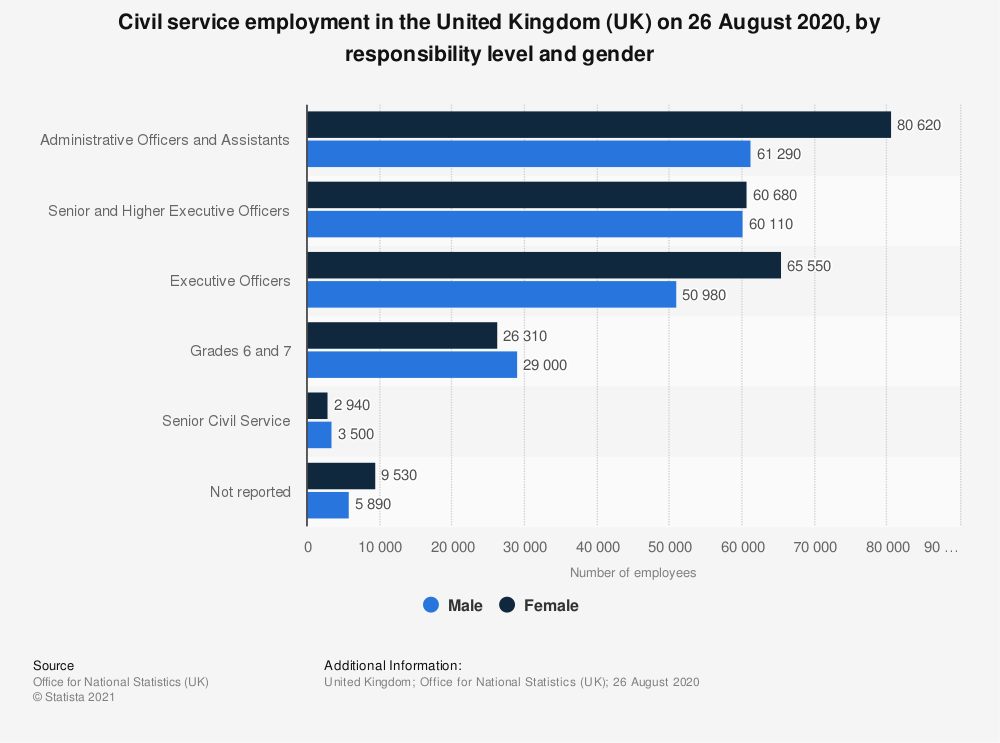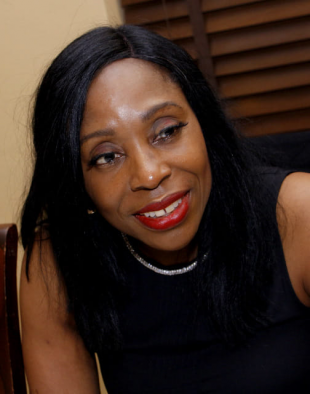Tue 31 Aug 2021

Gender balance in the UK’s civil service is on the up. Look at the graph below, and you’ll see the upward trend – female representation in public sector organisations has remained over 50% since 2001, and the ONS data for 2020 put it at 53.8%. Moreover, the Institute for Government argues that the percentage is well above the proportion of women in the working-age population.

However, the challenge for women in the civil service is the same that businesswomen experience in the private sector – the higher up you go, the lower the proportion of women in leadership positions.
Female representation in civil service has increased or remained flat across all grades for most of the past decade. However, ONS data for 2020 show that women in senior civil service (SCS) roles represent 46.7%. Men outnumbered women at every reported responsibility level except for administrative officers and executive officers. The graph below, courtesy of Statista, gives you the full picture.
 So, what are the barriers obstructing you to reach senior civil service (SCS) roles? And what advice can inspire you to step up to the top?
So, what are the barriers obstructing you to reach senior civil service (SCS) roles? And what advice can inspire you to step up to the top?
The report Women in Whitehall, a study by the Cabinet Office released in 2014, helps us answer the first question. Consulting firm Hay Group carried out the study and identified significant blockages preventing talented women from succeeding – the culture and leadership climates prevented them from progressing into more senior roles.
Researchers also found that the talent pool from which leaders were recruited was significantly smaller than it could be due to existing pay constraints. They argued that pay constraints, in turn, constrained performance. However, the study found that women entering the SCS had exactly the leadership capabilities required to progress into more senior roles – and they had the ambition to be promoted in equal measure to men.
Fast-forward seven years and the statement “women entering the SCS have the ambition to be promoted in equal measure to men” reads as true as ever.
Here’s where the second question takes centre stage – and the answer to it was given by Dame Una O’Brien, former Permanent Secretary at the Department of Health, in an interview released the year she retired. Her advice for women who are aspiring to be senior civil servants was clear: “It’s very important that women step up and do challenging and unpopular jobs because that’s how you will get noticed and gain the experience you need to thrive in the senior civil service,” she said.
The leader you want to see
The culture and leadership climate within an organisation can become barriers for women to reach leadership positions. These roadblocks can be addressed collectively via policies and strategies that HR departments and managers roll out. However, implicit in Dame O’Brien’s advice is one of the most important barriers of all – the behaviour that impedes women from getting noticed.

Ady Dike, non-executive director to the GIAA board, expressed this very sentiment in her blog ‘Becoming the women leaders we aspire to be’ published in March. “I believe barriers to mobility for women come in two forms, the ones imposed on us through gender biases and the ones we put on ourselves. I have found the latter to be the most detrimental to becoming the sort of professionals we aspire to be,” she wrote.
Dike (pictured as seen on the Government Internal Audit Agency blog), argued that gatekeepers of those high-up roles have historically been men who may not be aware of the unconscious gender bias they have for who should be a natural successor or who should fit into those roles. However, she pointed at the underlying issue of perception – the belief that one needs to be perfect, tick all the boxes, to apply for an SCS role. Does it sound familiar?
If you think about it, a leadership position is unchartered territory for everyone. Men run towards the challenge, but women hesitate, caught up by what is now known as the impostor syndrome – the psychological pattern in which a person, despite the accomplishments achieved, still believe that they're not worthy.
Speaking at a speed mentoring session, mindset coach Susie Ramroop said that such a feeling doesn’t come alone – it is often accompanied by fear of judgment and a tendency to compare ourselves with other people. And she argued that these elements stop us by choice.
“That's not to say that we should ignore these feelings and sweep them under the carpet. But it's getting aware of whether it is moving us forward,” explained Ramroop.
Can you choose not to get caught up by the impostor syndrome and become the leader you want to be? Ramroop will be speaking at Women into Leadership on 29 September. In her session ’The power of storytelling’, she will give you an actionable tool to overcome self-imposed barriers.
Other sessions you don’t want to miss:
- Compassionate leadership: leading change whilst cultivating inclusivity by Sarah Munby, Permanent Secretary, Department for Business, Energy and Industrial Strategy
- Communicating with Confidence: gaining credibility and influence by Cath Baxter, professional voice and public speaking consultant
- Leadership in action: lifting others as you climb by Bernadette Thompson OBE, Deputy Director Inclusion, Wellbeing and Employee Engagement; People Capabilities and Change Directorate, Ministry of Housing, Communities and Local Government
- Explore the agenda and register today!
Women into Leadership is brought to you in partnership with FDA.

View all news